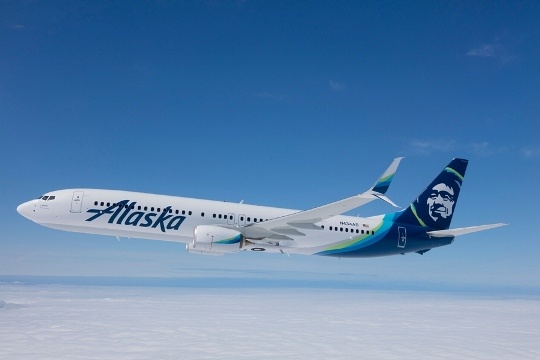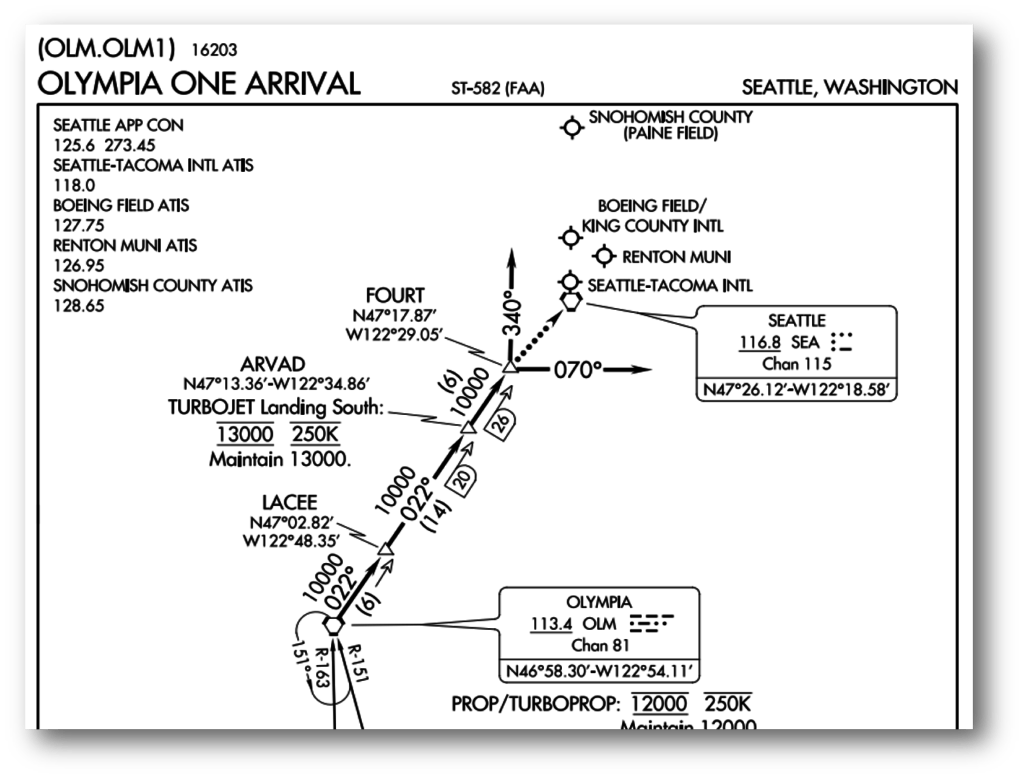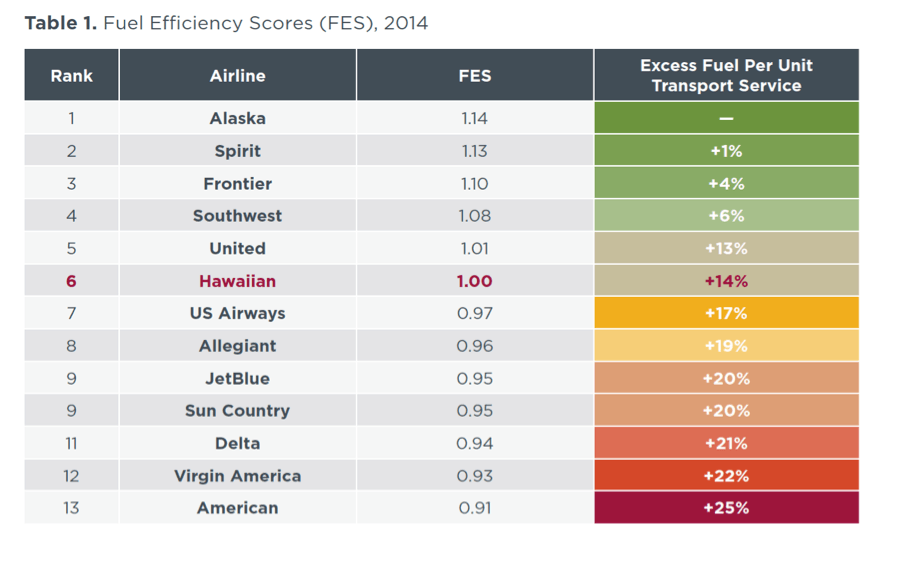Battling Headwinds: How Alaska Airlines Is Navigating Impending Climate Change Regulation

For 85 years, Alaska Airlines has been the little airline that could, avoiding the bankruptcies and consolidations that have plagued nearly every other major U.S. carrier. But can Alaska weather the existential threat of impending climate change regulation as a small, independent carrier?
Alaska Airlines might be characterized as the little airline that could. Although it accounts for only 5% of U.S. air carrier capacity, Alaska is the only major airline never to have filed for bankruptcy and today is America’s most profitable major air carrier [1]. Despite its 85-year enterprising history, though, Alaska now faces a new existential threat—climate change and the impending airline regulations designed to abate it. Can Alaska Airlines weather this latest storm as a small, independent carrier?

The Challenge
Commercial airplanes produced 11% of the U.S. transportation sector’s greenhouse gas emissions in 2013 [2]. In addition to the literal headwinds that climate change will impose through altered wind patterns [3], airlines will need to comply with costly new environmental regulations. While the U.S. Environmental Protection Agency (EPA) has been working to implement emissions standards for aircraft and engine manufacturers since 2015 [4], the regulations that will most directly impact airlines are known as CORSIA (Carbon Offsetting and Reduction Scheme for International Aviation). CORSIA, formally adopted by the U.N. in October 2016 [5], will set baseline CO2 emissions at the average of 2019-2020 levels [6]. Starting in 2021, to the extent the global airline industry exceeds baseline levels, carriers will be required to offset emissions by purchasing carbon credits in global markets.
While the specifics of measurement and enforcement at the individual carrier level have yet to be set, Alaska, like all carriers, must prepare to adapt to a new operational and economic reality.
Alaska’s Responses
Airlines can reduce their emission profiles through (i) air traffic control and operational improvements, (ii) cleaner-burning fuels, and (iii) fleet upgrades. Alaska Airlines is an industry leader in all three areas, having already reduced its 2015 greenhouse gas emissions by 12% relative to its 2009 baseline [7].
Air Traffic Control Improvements

Since 2010, Alaska Airlines has partnered with the Federal Aviation Administration (FAA) (which operates the U.S. air traffic control system), Boeing, and Seattle-Tacoma International Airport, to implement its “Greener Skies Over Seattle” (GSOS) initiative. Nationwide, most flights are instructed to descend from their cruise altitudes in a “staircase” pattern, making several descents to intermediate altitudes and applying engine power to maintain those altitudes. GSOS is testing alternate arrival routes allowing certain flights to descend continuously from cruise altitude to the airport, with minimal power necessary until final approach [8]. Each Boeing 737-800 using these routes saves nearly 600 gallons of fuel, eliminating 1,800+ pounds in emissions [9].
Alternate Fuels
Alaska Airlines has also been encouraging the development of “sustainable aviation biofuels,” including those developed from used cooking oil and the byproducts of forest clearings, which vendors claim reduce emissions by 50% over their lifecycles compared to petroleum fuels. Alaska Airlines was the first U.S. carrier to operate scheduled flights using biofuel.
Challenges to scaling the use of biofuels include production science, economic viability (encouraging the development and purchasing of biofuels during today’s low oil price environment may require government subsidies), and infrastructure (each airport must invest in facilities to make biofuel available).
Alaska Airlines in 2015 initiated a $250,000 study with Seattle-Tacoma International Airport on the feasibility of building biofuel infrastructure [10].
Fleet Upgrades

Alaska Airlines has been ranked the most fuel-efficient U.S. carrier five years in a row by the International Council on Clean Transportation, using 25% less fuel per revenue passenger-mile than the lowest-ranked carrier [11]. Alaska attributes its fuel efficiency to its young fleet, installation of fuel-saving aftermarket retrofits such as winglets, and efficient routings, like the continuous descent arrival procedure described above [12].
Preparing for Takeoff
Alaska Airlines has initiated several projects that have the capability to substantially reduce its future emissions footprint. Over the coming years, Alaska should advance these projects so they can be deployed to their full potential, minimizing emissions offsetting expenses after CORSIA’s 2020 base year. Specifically, Alaska should work with the FAA and other carriers to fully implement continuous-descent arrivals at airports throughout Alaska’s route network. Alaska should also remain laser-focused on profitability so it can continue to outpace its competitors by investing in newer, more fuel-efficient aircraft.
While some initiatives, such as those described above, are within Alaska’s control, realizing other imperatives, such as commercializing aviation biofuels, may require influencing or co-opting players far larger than Alaska, including other airlines and the U.S. government.
Alaska Airlines is proud to have resisted acquisition and succeeded as a small, nimble carrier throughout its history. Now, aviation climate change regulation threatens to fundamentally change the industry’s economics and power dynamics. Will scale and the ability to influence government and alternative fuel suppliers matter more in the airline industry of the future, or can Alaska continue to harness the entrepreneurial resourcefulness of its namesake state to fly independently into the future?
(782 words)
[1] Adam Levine-Weinberg, “How America’s Most Profitable Airline Will Keep Flying in 2017,” The Motley Fool, http://www.fool.com/investing/2016/10/24/how-americas-most-profitable-airline-will-keep-fly.aspx, accessed November 2015.
[2] International Council on Clean Transportation, “U.S. domestic airline fuel efficiency ranking, 2014” (PDF file), downloaded from ICCT website, http://www.theicct.org/us-domestic-airline-fuel-efficiency-ranking-2014, accessed November 2016.
[3] Paul D. Williams, “Transatlantic flight times and climate change,” http://phys.org/news/2016-02-climate-transatlantic-flights.html, accessed November 2016.
[4]Jad Mouawad and Coral Davenport, “E.P.A. Takes Step to Cut Emissions From Planes,” New York Times, June 10, 2015, http://www.nytimes.com/2015/06/11/business/energy-environment/epa-says-it-will-set-rules-for-airplane-emissions.html, accessed November 2015.
[5] “Historic agreement reached to mitigate international aviation emissions,” press release, October 6, 2016, on ICAO website, http://www.icao.int/Newsroom/Pages/Historic-agreement-reached-to-mitigate-international-aviation-emissions.aspx, accessed November 2016.
[6] ICAO, “What is CORSIA and how does it work?”, http://www.icao.int/environmental-protection/Pages/A39_CORSIA_FAQ2.aspx, accessed November 2016.
[7] Alaska Airlines, “Flight emissions,” https://www.alaskaair.com/content/about-us/sustainability-report/environment/flight-emissions.aspx, accessed November 2016.
[8] Federal Aviation Administration, “Greener Skies Over Seattle,” https://www.faa.gov/nextgen/snapshots/stories/?slide=6, accessed November 2016.
[9] GreenAirOnline.com, “Fuel and emissions savings from Sea-Tac Greener Skies precision approach initiative exceed expectations,” http://www.greenaironline.com/news.php?viewStory=2120, accessed November 2016.
[10] Alaska Airlines, “Sustainable biofuel,” https://www.alaskaair.com/content/about-us/sustainability-report/environment/sustainable-biofuel.aspx, accessed November 2016.
[11] International Council on Clean Transportation.
[12] “Alaska Airlines rated #1 fuel efficient U.S. carrier for fifth year in a row,” press release, November 9, 2015, on PR Newswire website, http://www.prnewswire.com/news-releases/alaska-airlines-rated-1-fuel-efficient-us-carrier-for-fifth-year-in-a-row-300175094.html, accessed November 2016.



This is a really interesting post about an industry that, in my opinion, is one of the greatest threats to our environment (see my blog post about trains!) While you’ve highlighted some important steps a carrier can take to reduce its impact on the environment, do you really believe that any airline carrier can be sustainable and profitable without a truly fundamental change to air travel?
Very interesting article! I know very little about the airline industry, but this article was very well-written and easy to understand. I do have a few questions though. 1) With CORSIA regulations setting a baseline of emissions at 2019-2021 levels, are there any drivers, other than cost-savings, incentivizing carriers to reduce emissions today? Is there concern that carriers will game the system, artificially elevating emissions in between 2019 and 2021? 2) Continuous-descent arrivals seem to make a lot of sense, so why aren’t they currently employed? What are the advantages of a staircase-pattern descent that might be lost if all carriers switch to a continuous scheme? 3) Given that Alaska Airlines already has a much more efficient fleet than their major rivals, what else can they as an organization do to drive airline manufacturers to produce more energy efficient planes?
Thanks so much for the interesting read!
Love that Olympia One Arrival – did a few touch and go’s at Boeing Field and Paine Field. It will be really interesting to see how far biofuels can go. Biofuels can be blended with conventional fuels, and when used normally only make up about 1% of the total fuel. Given how much fuel the aviation industry consumes, I wonder how much biofuel production can be scaled up to address the demand.
Really surprised about the descent pattern benefits – seems like a simple and powerful way to reduce emissions. On the alternate fuel and modern fleet fronts, looks like Alaska is in a great place. However, airlines in general are in a difficult position on these two, in that many of the factors that drive the improvements can only be influenced but not controlled by the airlines themselves. As you mentioned, using biofuels would require infrastructure that is in the hands of the airports. Aircraft efficiency depends on manufacturers, which can be impacted by airline demand but have extremely long development cycles regardless. In a space like this, it seems critical that environmental standards are carefully coordinated across players in the entire ecosystem, taking into account the possibilities and constraints at each level such that the industry moves forward in alignment.